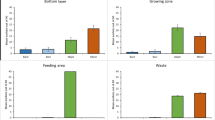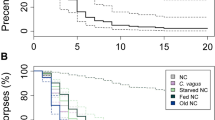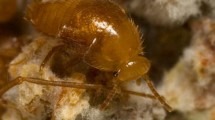Summary.
Leaf cutting ants live in symbiosis with a basidiomycete fungus that is exploited as a source of nutrients for the ant larvae. Tests of fungus transport demonstrated that Acromyrmex subterraneus subterraneus workers discriminate concolonial fungus from alien fungus, and rejected the latter. Larvae and pupae of the ant were used as controls. Chemical analysis of the fungus revealed a great similarity between its hydrocarbon profile and that found on the ant brood. Experiments with lures showed that chemical extracts from the fungus are responsible for this discrimination process. Moreover, the presence of brood inside the fungus seemed to be important for discrimination of the fungus by workers. Resident workers accepted concolonial broodless fungus less than concolonial fungus inoculated with brood odor. Fungus seems to acquire colonial odor passively, simply by contact with the brood. The impact of fungus volume present in the nest on closure of the colony is discussed. We show here for the first time the importance of a symbiotic vegetal organism in colonial recognition in social insects.
Similar content being viewed by others
Author information
Authors and Affiliations
Additional information
Received 14 April 2000; accepted 29 September 2000
Rights and permissions
About this article
Cite this article
Viana, A., Frézard, A., Malosse, C. et al. Colonial recognition of fungus in the fungus-growing ant Acromyrmex subterraneus subterraneus (Hymenoptera: Formicidae). Chemoecology 11, 29–36 (2001). https://doi.org/10.1007/PL00001829
Issue Date:
DOI: https://doi.org/10.1007/PL00001829




